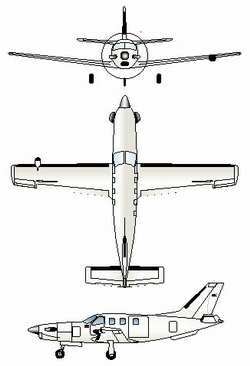Pilot Confirmed Icing Conditions, Asked For Higher
Altitude
A brutally tragic pre-holiday that claimed the lives of five
people is receiving intense media and government scrutiny. The
first of a series of updates and reports expected from the NTSB has
been published and confirms the reports that the TBM pilot knew he
was icing up and was attempting to climb through it before the
flight went awry.

NTSB Identification: ERA12FA115
14 CFR Part 91: General Aviation
Accident occurred Tuesday, December 20, 2011 in Morristown,
NJ
Aircraft: SOCATA TBM 700, registration: N731CA
Injuries: 5 Fatal.
This is preliminary information, subject to change, and may contain
errors.
On December 20, 2011, about 1005 eastern standard time, a Socata
TBM 700, N731CA, collided with terrain following an in-flight loss
of aircraft control near Morristown, New Jersey. The airplane was
registered to Cool Stream LLC and was operated by the pilot. Visual
meteorological conditions prevailed and an instrument flight rules
flight plan was filed for the flight from Teterboro, New Jersey
(TEB) to Atlanta, Georgia (PDK). The personal flight was conducted
under the provisions of 14 Code of Federal Regulations Part 91. The
airplane sustained substantial damage. The certificated private
pilot and four passengers were fatally injured. The flight
originated from TEB at 0950.
A preliminary review of recorded radar and voice communications
revealed that the pilot was in communication with the Federal
Aviation Administration, New York Air Route Traffic Control Center
(ARTCC). While flying at 17,000 feet mean sea level (MSL) the pilot
reported that he was in icing conditions. The pilot requested a
climb, and the flight was subsequently cleared to flight level (FL)
200. The aircraft reached a maximum altitude of 17,900 feet and
then began to descend. Radar and radio contact with N731CA was lost
about 1005.

The airplane impacted a wooded median on Interstate Highway 287,
about 1 mile south of Morristown. Several sections of the airplane,
including the propeller assembly, came to rest in a wooded area on
the east side of the northbound lanes. A post-crash fire was
evident in the highway median, where the fuselage came to rest. The
outboard section of the right wing and several sections of the
empennage were found about 0.25 miles southwest of the fuselage, in
a residential area.
The pilot held a private pilot certificate with ratings for
airplane single-engine land and instrument airplane. He reported a
total flight experience of 1,400 hours on his latest second-class
medical certificate application, dated July 14, 2011.
The airplane was manufactured in 2005 and equipped with a Pratt
and Whitney Canada PT6A-64 turbo-prop engine. The most recent
annual inspection was performed on July 27, 2011. At that time, the
airplane had accumulated approximately 702.0 total flight hours.
The last logbook entry was recorded on November 18, 2011, at an
aircraft total time of 724.6 hours.
The wreckage was recovered to a storage facility, where a
detailed examination will be performed NTSB.
 ANN's Daily Aero-Term (04.26.24): DETRESFA (Distress Phrase)
ANN's Daily Aero-Term (04.26.24): DETRESFA (Distress Phrase) Aero-News: Quote of the Day (04.26.24)
Aero-News: Quote of the Day (04.26.24) ANN's Daily Aero-Term (04.27.24): Direct
ANN's Daily Aero-Term (04.27.24): Direct ANN's Daily Aero-Linx (04.27.24)
ANN's Daily Aero-Linx (04.27.24) Aero-News: Quote of the Day (04.27.24)
Aero-News: Quote of the Day (04.27.24)




